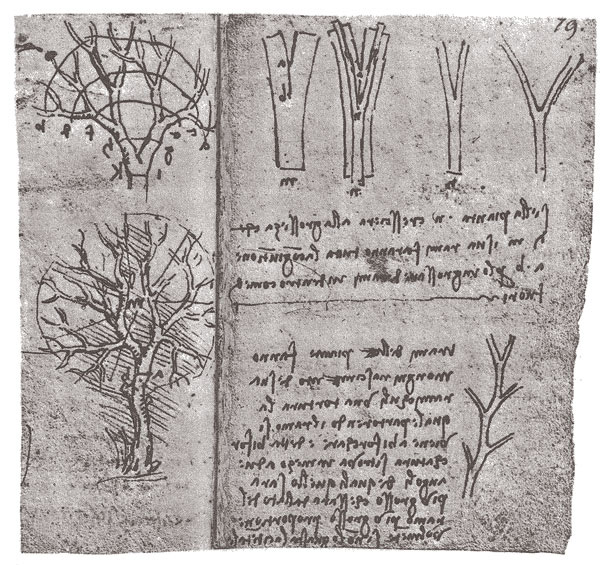The average tree grows its branches out until it encounters the branch tips of a neighboring tree of the same height. It doesn’t grow any wider because the air and better light in this space are already taken. However, it heavily reinforces the branches it has extended, so you get the impression that there’s quite a shoving match going on up there. But a pair of true friends is careful right from the outset not to grow overly thick branches in each other’s direction. The trees don’t want to take anything away from each other, and so they develop sturdy branches only at the outer edges of their crowns, that is to say, only in the direction of “non-friends.” Such partners are often so tightly connected at the roots that sometimes they even die together.
Peter Wohlleben, “The Hidden Life of Trees”
I’ve come to think
that root systems and the mycorrhizal networks that link those systems are designed like neuralnetworks, and behave like neural networks, and a neural network is the seeding of intelligence in our brains.[…]
If we think of my forest, and the networks I’ve described, that design is efficient for transmitting resources among trees and how they interact with each other. In our brains, scale-free networks are an efficient way for us to transmit neurotransmitters.
Suzanne Simard, a professor in the Department of Forest & Conservation at the University of British Columbia

Every tree, therefore, is valuable to the community and worth keeping around for as long as possible. And that is why even sick individuals are supported and nourished until they recover. Next time, perhaps it will be the other way round, and the supporting tree might be the one in need of assistance.
Peter Wohlleben, “The Hidden Life of Trees”
[…]
A tree can be only as strong as the forest that surrounds it.

I’ve used the word intelligence in my writing because I think that scientifically we attribute intelligence to certain structures and functions. When we dissect a plant and the forest and look at those things—Does it have a neural network? Is there communication? Is there perception and reception of messages? Will you change
behaviors depending on what you’re perceiving? Do you remember things? Do you learn things? Would you do something differently if you had experienced something in the past?—those are all hallmarks of intelligence. Plants do have intelligence. They have all the structures. They have all the functions. They havethe .behaviors […]
we’re prisoners of our own western science; indigenous people have long known that plants will communicate with each other. But even in western
Suzanne Simard, a professor in the Department of Forest & Conservation at the University of British Columbiascience we know it because you can smell thedefense chemistry of a forest under attack. Something is being emitted that has a chemistry that all those other plants and animals perceive, and they change theirbehaviors accordingly. Putting scienceon that raises our own awareness that these plants are communicating just like we are. It’s just not a vocal thing—although some people are even measuring acoustics in trees and realizingthere’s lots of sounds that we can’t hear, and that could be part of their communication. But I don’t know how far that research has gone. In my ownwork I’ve looked at the conversation through chemistry.

I think that we are. I think that we’re so utilitarian with plants and we abuse them to no end. I think that comes from us having our blinders on. We haven’t looked. We just make these assumptions about them that they’re these benign creatures that have no emotion. No intelligence. They don’t behave like we do, so we just block it out.
Suzanne Simard, a professor in the Department of Forest & Conservation at the University of British Columbia
❖Peter Wohlleben: “The Hidden Life of Trees: What They Feel, How
❖Bernadette Pourquie and Cecile Gambini: “Strange Trees: And the Stories Behind Them”
❖Rachel Sussman: “The Oldest Living Things in the World“
❖[edit, November 2019] “Never Underestimate the Intelligence of Trees”, interview with Suzanne Simard by Brandon Keim
